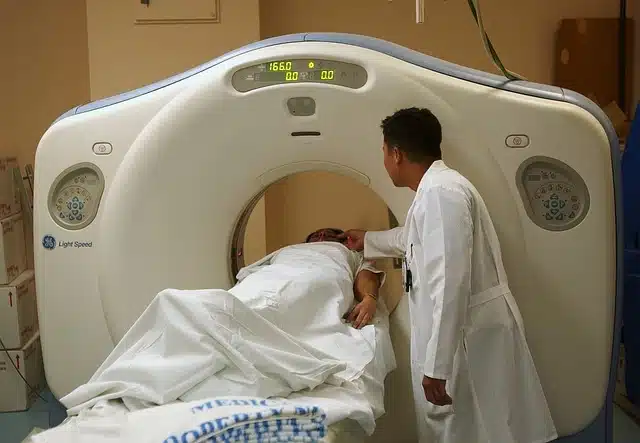According to a new poll, Americans postponed medical care in 2022 amid the highest inflation over 40 years. A record 38% of those surveyed put off treatment due to cost, up 12 percentage points since 2021 and the highest since 2014.
Americans were more than twice as likely to report the delayed treatment in their family was for a serious rather than a nonserious condition in 2022. The report is alarming as 27% said the treatment was for a “very” or “somewhat” serious disease or illness, while 11% said it was “not very” or “not at all” serious.
US healthcare spending grew 2.7% in 2021, reaching $4.3 trillion, or $12,914 per person. According to Gallup’s annual Health and Healthcare report, most U.S. adults polled said inflation is “creating at least a moderate hardship” for them. The report also identified three groups more likely to report delaying care:
- Lower-income adults with household incomes under $40,000 annually.
- Young and middle-aged were much more likely than older Americans who rely on Medicare.
- 32% of women versus 20% of men reported delays.
Your health should be a priority for everyone, but financial wellness takes precedence for many people. Postponing visits to medical professionals is not new, it occurred during the pandemic when people feared being around others. A June 2020 report from the US Centers for Disease Control and Prevention found that 41% of Americans delayed medical care, including 12% who postponed urgent or emergency care as deaths from COVID-19 soared.
Don’t Delay Medical Care – Find Affordable Options
Postponing doctor visits may mean not getting proper medication, lab testing, or physical therapy treatment. The consequences of delayed medical treatment for a severe condition could worsen your condition, cause more harm than good by decreased effectiveness, and reduce potential options for surgery or care. Delayed medical care can prolong or intensify your physical pain.
Staying healthy is of utmost importance to you and your family. Many Americans relied on tight budgets in 2022 as rising inflation squeezed wallets, especially for grocery staples like eggs and other necessities. While inflation is lower in recent months, you may not feel immediate relief from higher costs, especially if we head into a recession. Prioritize your health for preventive and medical care by seeking medical attention for serious situations before your risks spiral out of control.
Instead of postponing doctor appointments when household costs rise, you can take steps to shore up your healthcare coverage if you don’t have a plan or need emergency care.
Get an affordable health insurance plan during the open enrollment season. If you missed the open enrollment period, you could enroll in a private health plan in the Marketplace if you qualify for special enrollment due to complex issues.
Medical providers in a health insurance plan are in-network providers. When they join the network, they agree to take a lower amount for their care. Find an in-network physician for your insurance plan rather than an out-of-network doctor who will be more costly.
Understand your health care insurance, what it covers, and the plan’s costs. The plan contains a lot of confusing jargon:
- The premiums are the amount you pay per month.
- Exclusions that are typically not covered in your policy.
- Annual deductibles are required to pay the initial portion of medical expenses.
- Co-payments, or co-pays, require you to pay a certain dollar amount each time you have a specific covered expense item. Co-pays are for doctor visits and prescriptions.
- Coinsurance is the percentage of costs of a covered health plan.
- The out-of-pocket maximum is the most you will pay in a policy period (typically a year) before the insurer pays 100% of your covered costs.
Once you max out your annual deductible amount, you pay a copayment or coinsurance, and your insurance company pays the rest. The average deductible was $2,825 during the Open Enrollment for 2021.
You may need a hospital stay if you have a serious condition, adding costs to your bill. However, check to see if you qualify for a no-cost or reduced stay cost that can provide some savings. Otherwise, you can set up a payment plan.
If You Lack A Health Insurance Plan
According to the U.S. Census, 27.5 million people in the U.S., or about 8.5%, do not have health insurance.
Visit HealthCare.gov to enroll in a health insurance plan. Alternatively, you can find your local social services department to determine whether you qualify for free or low-cost insurance. Getting medical care without health insurance is challenging, but it is possible.
To get free or low-cost access to health services, try freeclinics.com or search for community health clinics in your area. Walk-in clinics are usually for minor issues if you don’t have insurance.
Urgent care centers are available for immediate emergencies or urgent medical needs. They can take direct payments from patients and are usually a cheaper alternative than a hospital visit.
You can either go to a hospital emergency room or call 911. They usually operate 24 hours a day as medical treatment facilities specializing in emergency medicine. Patients come into the hospital emergency room without appointments, regardless of their insurance status. These medical providers typically only accept care if you have insurance. Tell them upfront you don’t have insurance so they can assist you with their billing.
Charitable organizations can help you apply for funds or get healthcare plans that provide grants. The National Patient Advocate Foundation advocates for accessible, high-quality, affordable health care. Their site has a financial resource directory that is helpful.
Visit Medicare.com to find programs offered through your State Medical Assistance (Medicaid) office to help lower your Medicare costs. You may be to enroll in Medicare at age 62, earlier than age 65, if you have a specific condition. There are Medicare Savings Plans to get help from your state in paying premiums for your Medicare Part A (Hospital Insurance) and Part B (Medical Insurance).
Seek Affordable Medical Care Instead of Delaying Treatment
The sobering data from the Gallup poll suggests at least some Americans are sacrificing medical treatment when facing higher costs despite the consequences of increasing their health risks of serious conditions. There may be reasonable options for those with lower income to access medical care, some with the government’s help, at a lower cost instead of putting their health in danger.
Hi There!
With a passion for investing and personal finance, I began The Cents of Money to help and teach others. My experience as an equity analyst, professor, and mom provide me with unique insights about money and wealth creation and a desire to share with you.

